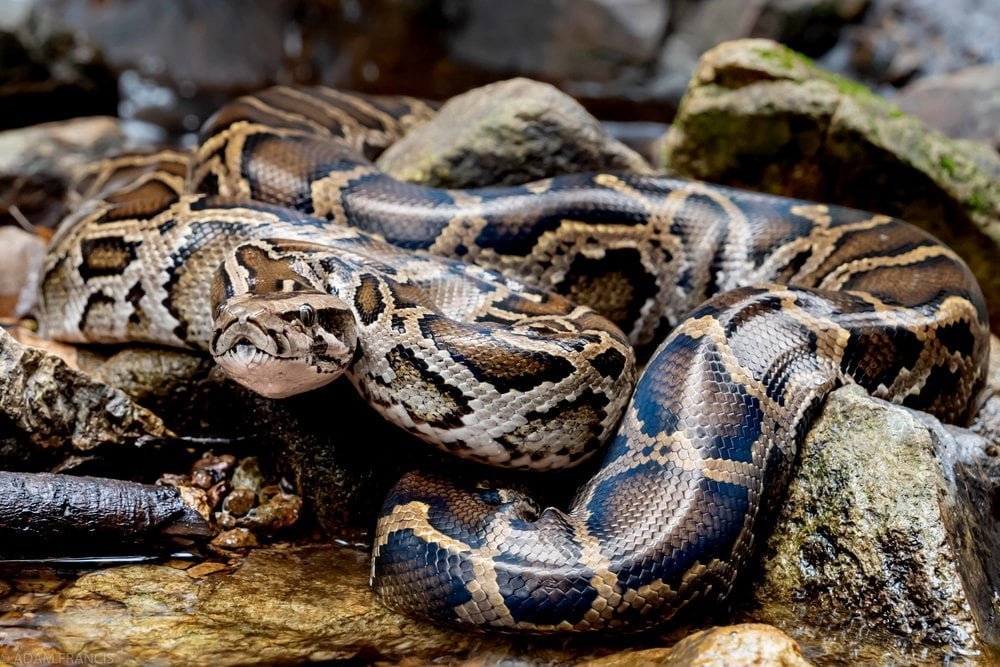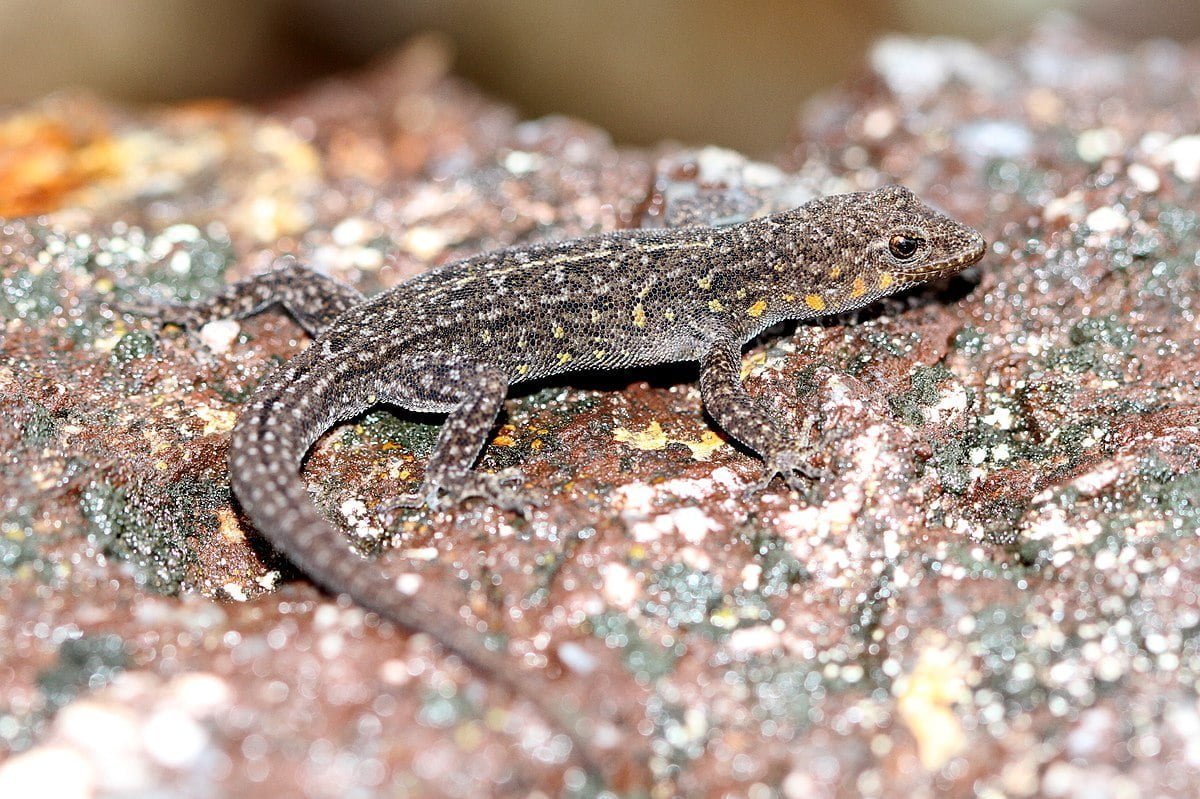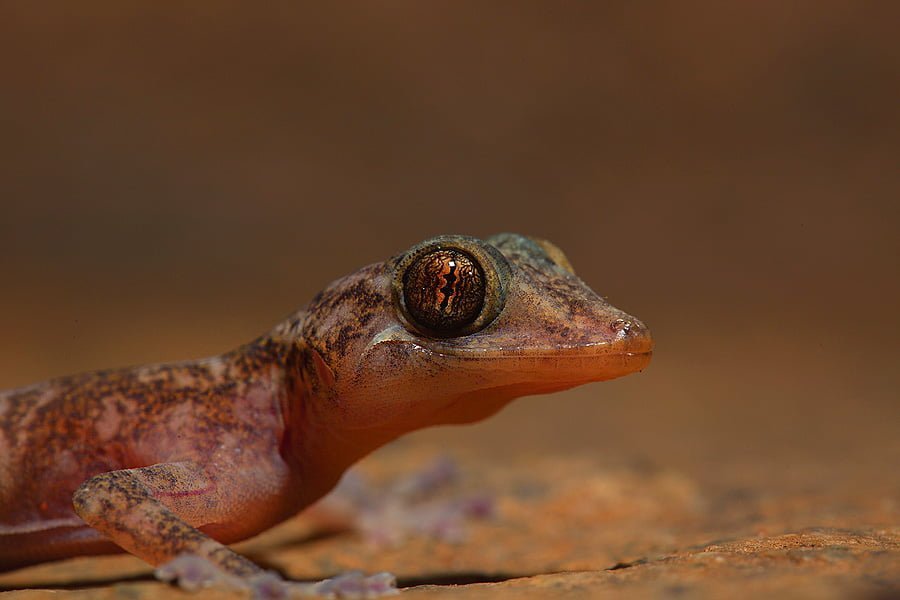Burmese python Facts, FAQs, Behaviour, Habitat, Conservation and More

Burmese python Facts | Description | Distribution and Habitat | Conservation | Behaviour and Ecology | Interaction with Human | Cultural | Interesting facts | frequently asked questions about Burmese python
The Amphibian Burmese Python is a fascinating and unique creature that is sure to captivate any animal lover’s imagination. This impressive reptile is known for its ability to swim and hunt in water, making it a true amphibian. With its striking pattern and impressive size, the Amphibian Burmese Python is not only a sight to behold, but also an important part of its ecosystem. In this article, we will delve deeper into the world of this fascinating creature and explore its habits, habitat, and incredible adaptations. Get ready to be amazed by the incredible Amphibian Burmese Python!
Taxonomy of Burmese python
| Kingdom | Animalia |
|---|---|
| Phylum | Chordata |
| Class | Reptilia |
| Order | Squamata |
| Suborder | Serpentes |
| Family | Pythonidae |
| Genus | Python |
| Species | Python bivittatus |
Morphology of Burmese python
| Body part | Description |
|---|---|
| Head | Triangular shape with distinct jaws and heat-sensing pits on each side |
| Body | Long, cylindrical shape covered in small, smooth scales |
| Skin | Tan or brown with large, dark brown blotches outlined in black |
| Eyes | Large, yellow or brown |
| Tongue | Forked, used for sensing prey and picking up scent |
| Teeth | Sharp and curved, used for grasping and holding prey |
| Length | Can grow up to 23 feet long, but typically ranges from 12 to 16 feet in length |
| Weight | Can weigh up to 200 pounds, but typically ranges from 100 to 150 pounds |
| Habitat | Found in Southeast Asia, typically near water sources such as rivers and marshes |
| Diet | Carnivorous, preying on a variety of mammals, birds, and reptiles |
| Behavior | Solitary and primarily nocturnal, but may bask in the sun during the day |
| Reproduction | Females lay clutches of up to 100 eggs, which they incubate by coiling around them and shivering to generate heat |

Description of Burmese python
The Burmese Python, scientific name Python bivittatus, is a large and impressive reptile native to Southeast Asia. It is one of the largest species of snakes in the world, capable of growing up to 23 feet in length and weighing up to 200 pounds. The Burmese Python has a distinctive tan or brown skin covered in large, dark brown blotches outlined in black. Its head is triangular in shape with distinct jaws and heat-sensing pits on each side, and its eyes are large and yellow or brown.
This reptile is primarily nocturnal, but may bask in the sun during the day. It is solitary and spends much of its time near water sources such as rivers and marshes. The Burmese Python is a carnivorous predator, preying on a variety of mammals, birds, and reptiles. It has sharp and curved teeth that it uses for grasping and holding onto its prey.
The Burmese Python reproduces by laying clutches of up to 100 eggs, which the female incubates by coiling around them and shivering to generate heat. The hatchlings are about 18 inches long and are capable of taking care of themselves from birth.
Despite its impressive size and strength, the Burmese Python is often kept as a pet by enthusiasts. However, it is important to note that owning a Burmese Python requires a significant amount of knowledge and care due to its size and potential danger. In some areas, the Burmese Python has become an invasive species, causing ecological damage to native ecosystems.
Distribution and habitat of Burmese python
The Burmese Python is native to Southeast Asia, specifically found in areas including Myanmar, Thailand, Laos, Cambodia, Vietnam, and southern China. Its natural range includes a variety of habitats, including forests, grasslands, and wetlands.
In its native range, the Burmese Python is often found near water sources such as rivers, lakes, and swamps. It is an excellent swimmer and can often be seen hunting for prey in the water. The Burmese Python is also known to inhabit human-altered landscapes such as agricultural areas and urban environments.
Due to its popularity as a pet and its introduction to new areas by humans, the Burmese Python has become an invasive species in some parts of the world, including southern Florida in the United States. In these areas, the Burmese Python has adapted to a variety of habitats, including forests, grasslands, and wetlands.
Despite its ability to adapt to a variety of habitats, the Burmese Python has specific habitat requirements in order to thrive. It requires access to water, as well as suitable prey species. In its native range, the Burmese Python preys on a variety of mammals, birds, and reptiles. In areas where it has become invasive, it has been known to prey on native species such as small mammals, birds, and reptiles, which can have a significant impact on the local ecosystem.
Behaviour and Ecology of Burmese python
The Burmese Python is a primarily nocturnal predator, but it may bask in the sun during the day. It is a solitary species and spends much of its time near water sources such as rivers and marshes. The Burmese Python is an excellent swimmer and is capable of hunting in the water as well as on land.
As a carnivorous predator, the Burmese Python preys on a variety of mammals, birds, and reptiles. Its diet can include animals such as rats, rabbits, and small deer. It has sharp, curved teeth that it uses to grasp and hold onto its prey, and it can constrict its prey to kill it before consuming it.
The Burmese Python is an important species in its native range, playing a role in controlling populations of small mammals and other prey species. However, in areas where it has become invasive, it can have a negative impact on native ecosystems by preying on and competing with native species.
The Burmese Python is capable of reproducing at a young age, with females reaching sexual maturity at around 3-4 years of age. Females lay clutches of up to 100 eggs, which they incubate by coiling around them and shivering to generate heat. The hatchlings are about 18 inches long and are capable of taking care of themselves from birth.
In areas where the Burmese Python has become invasive, efforts are being made to control their populations through methods such as trapping and hunting. However, it is important to note that owning a Burmese Python as a pet requires a significant amount of knowledge and care due to its size and potential danger.
Conservation of Burmese python
The Burmese Python is not currently considered to be an endangered species, but its populations are threatened by habitat loss and the pet trade. The Burmese Python is popular as a pet due to its large size and striking appearance, and as a result, it has been widely traded and transported around the world.
In areas where the Burmese Python has been introduced and has become invasive, it can have a negative impact on native ecosystems and wildlife. Efforts are being made to control its populations through methods such as trapping and hunting, and educating the public about the potential negative impacts of owning exotic pets.
In its native range, the Burmese Python is protected by law in some countries, including Myanmar, Thailand, and China. However, enforcement of these laws can be difficult, and poaching continues to be a threat to the species.
Conservation efforts for the Burmese Python include studying its ecology and behavior in order to better understand its populations and its role in ecosystems. Efforts are also being made to protect its habitat and educate the public about the importance of conserving this and other species. In addition, regulations are being put in place to control the trade and transport of exotic pets, including the Burmese Python.
Overall, the conservation of the Burmese Python is important in order to maintain the balance of ecosystems and protect the species from threats such as habitat loss, the pet trade, and poaching.
Interaction with Human of Burmese python
The Burmese Python has been used by humans for various purposes, such as for its meat and skin. In some parts of Southeast Asia, the Burmese Python is hunted for its skin, which is used to make leather goods. The meat of the Burmese Python is also consumed in some areas, although it is not widely eaten.
In recent years, the Burmese Python has become a popular exotic pet due to its large size and striking appearance. However, owning a Burmese Python as a pet requires a significant amount of knowledge and care, as they can grow up to 20 feet in length and require specialized housing and feeding.
In areas where the Burmese Python has become invasive, it can have a negative impact on humans by preying on pets and potentially posing a threat to people. In some areas of the United States, where the Burmese Python has established invasive populations, efforts are being made to control their populations through methods such as trapping and hunting.
Overall, the interaction between the Burmese Python and humans has both positive and negative aspects. While the species has been used for various purposes, including as a source of food and leather, and has become a popular pet, it can also pose a threat to humans in areas where it has become invasive. Therefore, it is important to educate the public about the potential dangers of owning exotic pets and the importance of controlling invasive populations of the Burmese Python.
Cultural and Historical Significance of Burmese python
In Southeast Asia, the Burmese Python has had cultural and historical significance for centuries. In some areas, it is considered a symbol of strength and power, and has been featured in artwork and mythology. In particular, the Burmese Python has been associated with the Hindu god Vishnu, who is often depicted resting on a bed of coiled snakes, including the Burmese Python.
Historically, the Burmese Python has been used for various purposes, such as for its meat, skin, and bones. Its skin has been used to make leather goods, while its bones have been used in traditional medicine. In some areas, the Burmese Python has also been used in religious ceremonies.
Today, the Burmese Python is a popular exotic pet and is also hunted for its skin and meat in some areas. However, in recent years, efforts have been made to protect the species, as its populations have been threatened by habitat loss and the pet trade.
Overall, the cultural and historical significance of the Burmese Python highlights the important role that animals can play in human societies. While the species has been used for various purposes throughout history, it is important to ensure that its populations are protected for future generations to appreciate and learn from.
Explanatory Notes for Burmese python
The Burmese Python (Python bivittatus) is a large constrictor snake that is native to Southeast Asia. It is one of the largest species of snakes in the world, with individuals that can grow up to 20 feet in length and weigh over 200 pounds.
Burmese Pythons are known for their striking appearance, which includes a pattern of dark brown or black blotches on a light tan or beige background. They have a broad, muscular body, a broad head, and small, beady eyes.
Burmese Pythons are semi-aquatic, meaning that they are adapted to living both on land and in water. They are excellent swimmers and are able to remain submerged for up to 30 minutes at a time. They are also skilled climbers and are able to climb trees and other structures in search of prey.
In their native range, Burmese Pythons are found in a variety of habitats, including forests, grasslands, and wetlands. They are also found in agricultural areas and near human settlements, where they may prey on domestic animals.
Despite their impressive size, Burmese Pythons are generally docile and are not considered to be a significant threat to humans. However, they have been responsible for several attacks on humans in captivity, and in areas where they have become invasive, they may pose a threat to native wildlife.
Overall, the Burmese Python is a fascinating and impressive reptile that has captured the attention of people around the world. While they can make interesting pets, it is important to ensure that they are kept in appropriate housing and are not released into the wild, where they can have a negative impact on the environment.
Interesting facts about Burmese python
- The Burmese Python is one of the largest snake species in the world, with individuals that can grow up to 20 feet in length.
- They are native to Southeast Asia, where they are found in a variety of habitats, including forests, grasslands, and wetlands.
- Burmese Pythons are semi-aquatic, meaning that they are adapted to living both on land and in water. They are excellent swimmers and can remain submerged for up to 30 minutes at a time.
- They are constrictor snakes, which means they kill their prey by squeezing them to death.
- Burmese Pythons are able to eat prey that is much larger than their own head, thanks to their flexible jaws and expandable skin.
- They are known for their striking appearance, which includes a pattern of dark brown or black blotches on a light tan or beige background.
- Burmese Pythons are skilled climbers and are able to climb trees and other structures in search of prey.
- They have a very slow metabolism and can survive for several months without food.
- Burmese Pythons are often kept as exotic pets, but they can be difficult to care for properly and can become aggressive if not handled correctly.
- In areas where they have been introduced outside of their native range, such as Florida in the United States, Burmese Pythons are considered an invasive species and are a threat to native wildlife.
General queries or frequently asked questions about Burmese python
What do Burmese Pythons eat?
Burmese Pythons are carnivores and primarily feed on small mammals, such as rats and rabbits. However, they are capable of eating prey that is much larger than their own head, including deer and other large mammals.
How long do Burmese Pythons live?
Burmese Pythons have a relatively long lifespan, with individuals living up to 20-25 years in captivity.
Are Burmese Pythons dangerous to humans?
While Burmese Pythons are not typically considered a threat to humans, they are capable of inflicting serious injuries if they feel threatened or are provoked. In addition, in areas where they have become invasive, they may pose a threat to native wildlife.
Do Burmese Pythons make good pets?
Burmese Pythons can make interesting pets for experienced reptile owners, but they require a lot of space, specialized care, and can become aggressive if not handled properly. In addition, owning a Burmese Python is illegal in some areas due to their potential impact on native wildlife if released or escaped.
Where are Burmese Pythons found in the wild?
Burmese Pythons are native to Southeast Asia, including countries such as Myanmar, Thailand, and Vietnam. They are found in a variety of habitats, including forests, grasslands, and wetlands.
How big can Burmese Pythons get?
Burmese Pythons are one of the largest species of snakes in the world, with individuals that can grow up to 20 feet in length and weigh over 200 pounds.
How do Burmese Pythons hunt for food?
Burmese Pythons are constrictor snakes, which means they kill their prey by squeezing them to death. They rely on their sense of smell and their ability to detect heat in order to locate and capture their prey.
Are Burmese Pythons endangered?
Burmese Pythons are not currently considered endangered, but they are threatened by habitat loss and the pet trade. In addition, they are considered an invasive species in areas where they have been introduced outside of their native range.
Can Burmese Pythons swim?
Yes, Burmese Pythons are excellent swimmers and are adapted to living both on land and in water. They are able to remain submerged for up to 30 minutes at a time.
Are Burmese Pythons social animals?
Burmese Pythons are solitary animals and do not typically form social groups or interact with other individuals outside of mating season.
Conclusion
In conclusion, the Burmese Python is a fascinating species of snake with a lot of interesting features and behaviors. They are one of the largest snakes in the world, and are capable of eating prey that is much larger than their own head. They are native to Southeast Asia, but have been introduced to other areas outside of their natural range, where they may have negative impacts on the environment. In addition, Burmese Pythons are often kept as pets, but require specialized care and can become aggressive if not handled properly. It is important to remember that while Burmese Pythons may be interesting and impressive animals, they should be respected and treated with caution.












